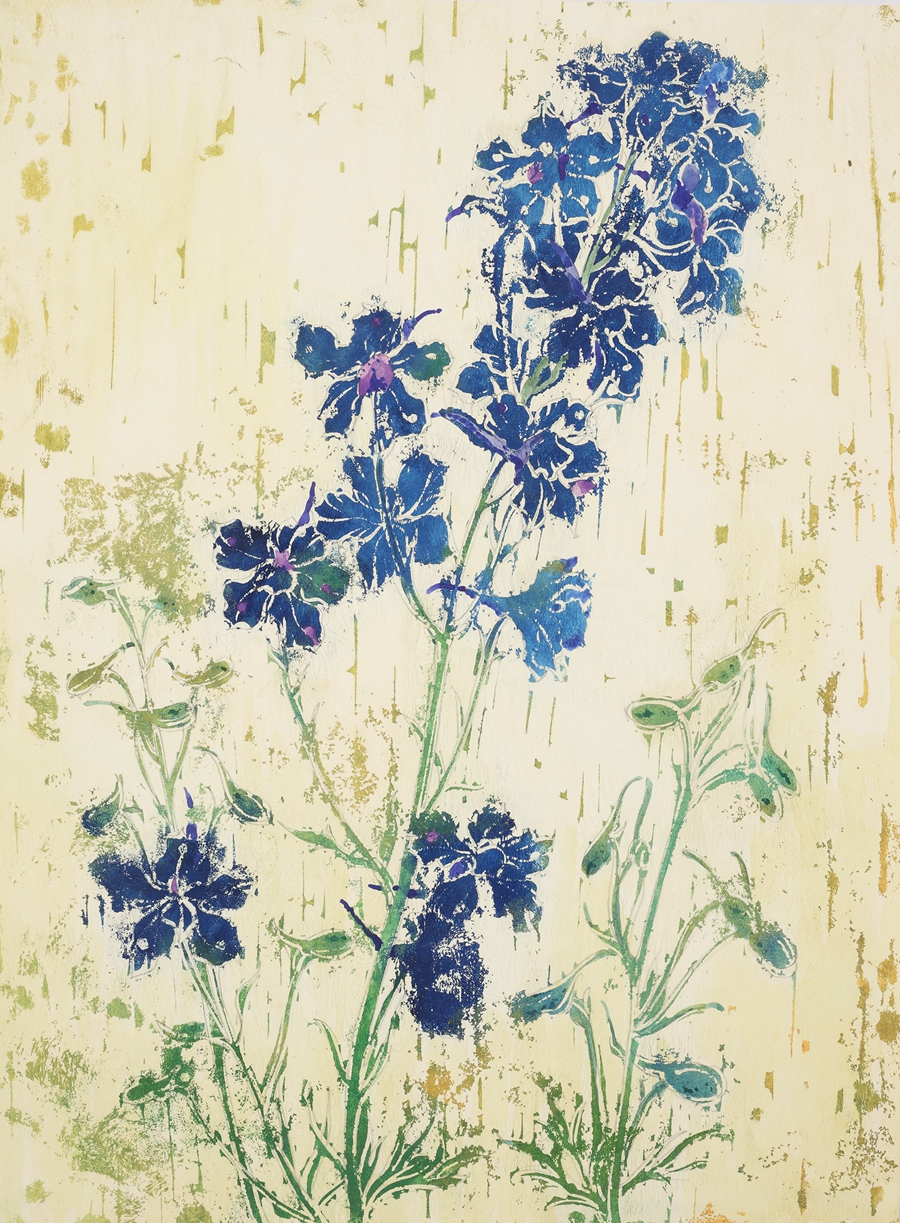Devoted to Dunhuang
An exhibition reveals how a father and daughter's commitment to conservation was forged by long days spent in caves unearthing a cultural oasis.
A painting of rocket larkspur flowers by Chang Shana in 1979.[Photo provided to China Daily]
While Chang Shuhong researched and cataloged the cave art, Chang Shana set about copying the murals by day and refining her painting skills by night.
"My father was strict about my studies. He asked me to get up early and practice the calligraphy found in Buddhist texts from the Tang Dynasty (618-907)," she says.
She recalls her excitement each day when she climbed up the ladder leading into the caves with the other researchers.
"The caves had no doors and faced east. When dawn broke, the morning glow lit up the colorful murals. Those beautiful, benign Buddhist statues kept me company."
While Chang Shana was helping her father prepare for a Dunhuang art exhibition in Beijing during the early 1950s, she met two old family friends who had a great influence on how they set out to promote Dunhuang-the architect couple Liang Sicheng and Lin Huiyin. They were impressed by the art as well as Chang Shana's gift for painting.
"That was how I later became an assistant to Lin Huiyin, who was then a professor at Tsinghua University's architecture department. Although she was very sick, she put all her heart into showing me how to categorize all the sophisticated patterns I saw in the caves and then transform them into designs that could benefit people's everyday lives."


